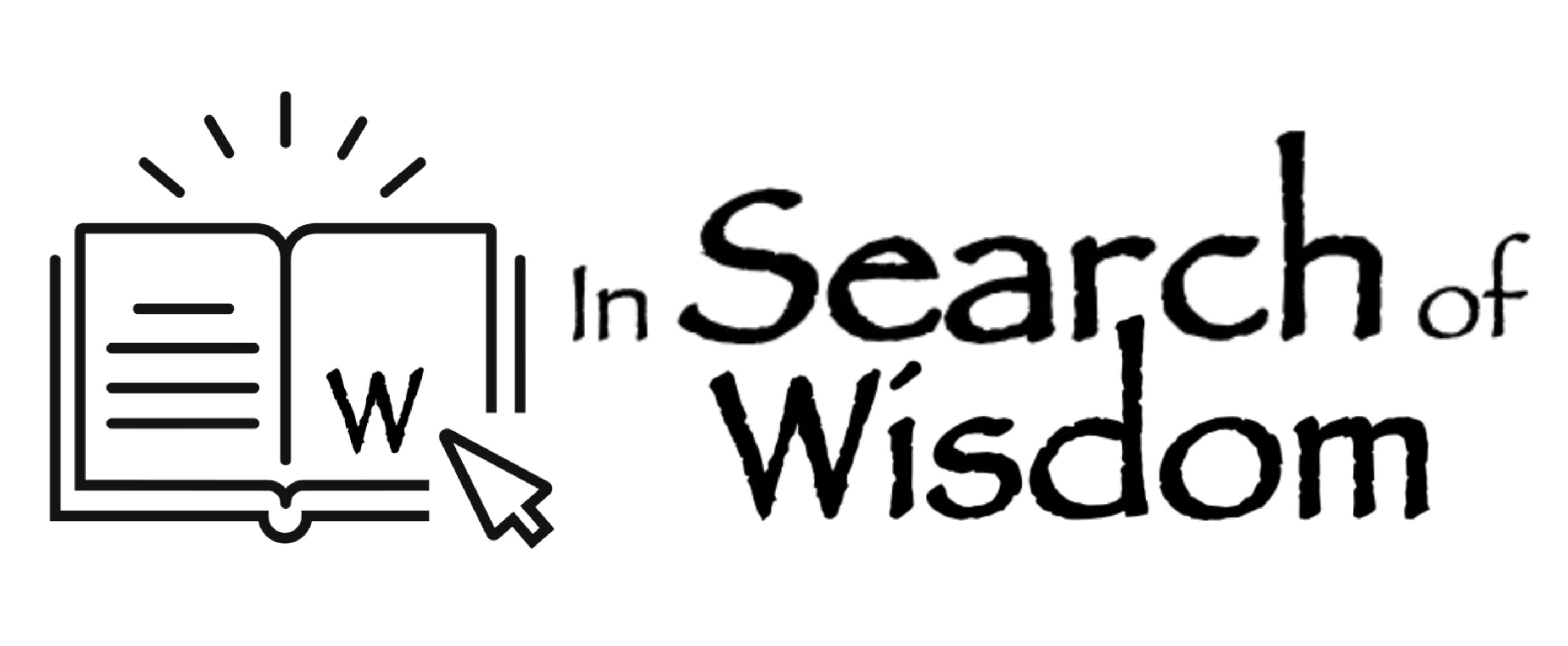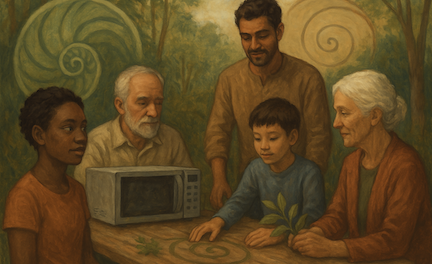Summary
As I enter my eighties, it seems appropriate to reflect on some general lessons drawn from fifty years’ management experience, as well as from life in general. We spend much of our energy in getting on with our own lives, whilst getting along with other people. And it’s what we accomplish together that really matters. The trouble is that there are many ways of thinking about any situation, and very different approaches to finding out the truth of the matter. Most of them depend to a greater or lesser extent on human reason, which is highly fallible. Thinking and working together can be enormously powerful, but our human nature makes it difficult for diverse groups to work together effectively – not least because our emotions play such a powerful part in our reasoning. That is why I believe that for would-be leaders there is great value in cultivating a growth mindset, developing an attitude of humble inquiry, mastering the art of dialogue and conversation, and combining the tools of an anthropologist with the skillset of a facilitator.
Introduction
“Life can only be understood backwards, but it can only be lived forwards”
(Søren Kierkegaard 1813-1855)
Søren Kierkegaard was a Danish philosopher and theologian – a contemporary of the well-known writer of fairy tales, Hans Christian Andersen. He believed passionately in the significance of each individual. In his eyes, every one of us is a unique person who lives only once and should do everything in our power to live out our lives with passion and commitment. For Kierkegaard, generalized truths that are widely accepted and universally acknowledged are of no interest, and his strongly voiced objections to “the public” with its broad acceptance of “what everybody knows” led the Norwegian playwright Henrik Ibsen (1828-1906) to describe him as “an enemy of the people”.
The quotation from his work summarises, for me, the twin imperatives of the “examined life”: throwing yourself wholeheartedly into every opportunity with passion and commitment on the one hand and reflecting on what you have learned from the experience on the other. So, what I want to do here is look back over my career in business and academia to see what advice I might offer to a would-be leader or manager.
For as long as I can remember, I have had a burning curiosity to find out about things. I loved books that explained how things worked when I was learning to read. Later, when I was seven or eight years old, I remember playing with my dinky-toy cars in the playground of my boarding school and asking myself the question, “What’s it all about?” But my learning about business and management started when I was working as an Archaeologist, supervising the excavations of William the Conqueror’s Castle in the Law Courts area of Winchester.
My Management Career
The Winchester City Council wanted to commission a site model because when we had completed the dig, what remained of the castle walls would be invisible to the public, encased in the foundations of a new car park. I volunteered to make the model, but the Council wanted a contract with a company, not an individual. Undeterred, I created a company and, together with two partners, established Palaeos Reproductions Limited to set about manufacturing the required model and, in due course, a range of museum-shop replicas, educational aids and costume jewellery based on historical artefacts. At the outset, I had no idea what I was doing, and nobody in my family had ever been in business, so it was a steep learning curve. However, it ended well when we sold the company to our biggest customer.
By then, my passion for business had eclipsed my original motivation, which was to generate funds to support my archaeological activities. When I was head-hunted by a well-established public company to become Managing Director of one of its subsidiaries, I jumped at the chance. It felt rather like exchanging a go-kart for a sports car!
If Palaeos had taught me about finance and marketing, my new environment, a century-old supplier of spectacle frames called Merx Optical, taught me about the practicalities of manufacturing management and the importance of corporate strategy. Whilst on a six-week general management course during this time, I met an ebullient Canadian businessman, Jack Wilson. He was a director of one of the most dynamic and profitable companies on the London Stock Exchange – Letraset International, a global leader in graphic arts materials. We enjoyed each other’s company tremendously and learned a lot about each other’s values and management style when we persuaded the course leaders to allow a small group of the students to undertake a live consultancy programme as a central part of the course curriculum. We kept in touch after the end of the six weeks. When a suitable opportunity beckoned, I was delighted to join him as Director of a new business venture within this fast-growing and exciting global business.
Letraset provided both context and motivation for my abiding curiosity about human nature. The context came from more than four years of living and working in Germany with responsibility also for our business in Austria and Switzerland, which gave me an inside perspective on cultural differences between nations. The motivation came a little later after being promoted to Director of Development and Supply for the Graphics business, responsible for worldwide marketing, manufacturing, and strategy. I had felt so pleased with myself for gaining this promotion that my first appraisal with the Group Managing Director came as a total shock – he told me in no uncertain terms, with full supporting detail, that he felt I was “not good with people”.
He marshalled sufficient evidence to convince me that he was right, so I wholeheartedly set about doing all I could to improve the situation with his full support. And this was where my present journey began. Letraset sent me on a series of courses on self-awareness and leadership offered by the Coverdale Organisation (now Coverdale OD), a process consulting firm. At the same time, I hired Synectics (now SynecticsWorld), a firm specializing in creativity and innovation, to facilitate our research and development resources to generate new products and markets. As a result of all this exposure, I discovered that I took readily to facilitation and soon found myself facilitating Letraset Graphics Division’s regular Board Meetings.
During the 1980s, word processors, personal computers, and related printing technology disrupted the printing industry and the role of secretaries in business administration. A three-year stint as Managing Director of a technology start-up venture enabled me to practice my experience gained in the three previous jobs, with the additional learning that goes with leading a multi-million-pound technology project and dealing with venture capitalists. By 1985 I was ready to set out on the path that shaped the second half of my management career.
I created a limited company as a vehicle for my consulting practice and named it Human Systems, reflecting Peter Checkland’s description of human activity systems in his book, “Systems Thinking, Systems Practice”. My initial focus was on managing innovation, but in response to market needs, it rapidly morphed into an emphasis on managing projects. Facilitation stood me in good stead as a consultant, where clients often called upon me to facilitate senior internal executive committees and external workshops or conferences involving stakeholders. It also formed the basis for the unique capability that, in time, became the hallmark of Human Systems International – benchmarking organizational project management.
Managing Projects
By the mid to late1980s, companies in diverse industries were increasingly adopting project-based working and demand grew strongly for project management training and consultancy. Business pressures were compelling business leaders to assess how well their firm’s practices and structures for managing projects compared with the ‘best in class’. In response, Human Systems developed a process for benchmarking organizational project management. In 1994 it formed its first network of businesses and government organizations that shared data securely and learned together through knowledge-sharing workshops[1]. We subsequently introduced new networks into Europe, Australia, the USA and South Africa. This exposure to top companies in diverse industries provided my colleagues and me with a tremendous opportunity to explore how many world-leading businesses operated from the point of view of semi-insiders.
In August 2000, I was awarded a PhD for a thesis reflecting on what we had learned from the Human Systems networks about managing projects, and from then onwards, I found myself drawn into the world of academia. Universities worldwide responded to the business need for project management education, and research opportunities were multiplying. Besides my management experience with Human Systems, I became involved with academic research and teaching at Universities in the UK, France, and Australia. The International Standards Organization (ISO) established a new committee dedicated to standards in project management, and the British Standards Institution persuaded me to lead the UK delegation. I chaired the first two interactive national conferences of the Association for Project Management (APM)in the UK and served on several advisory committees to the Project Management Institute (PMI) in the USA. During this period, I met Mark Winter and helped him and his colleague Charles Smith facilitate a UK government-funded research network called ‘Rethinking Project Management”.
In 2006, three colleagues who had worked closely with Human Systems joined me as partners in Human Systems International. We developed the business further, and in 2013 the company was acquired by PMI. For the next three years, I combined facilitation with research. I facilitated biannual workshops for PMI’s Global Executive Council, a network of leading global organizations with a strong interest in project management. In parallel with that, I was responsible for an internal PMI team working with senior executives in business and with the Boston Consulting Group to build a cooperative resource dedicated to the effective implementation of corporate strategy. This resource saw the light of day in 2018 as the Brightline Initiative. During the final two years before my retirement at the end of 2018, I represented PMI’s interests in helping to fund and support a UK government-led research programme into better projects, known as ‘Project X’.
Initial Career Reflections
Increasingly towards the end of my career, I found myself reflecting on my experiences as I prepared presentations for conferences, wrote articles or book chapters for publication and designed courses for post-graduate university students. Leaving aside my findings about projects, which are published elsewhere, four themes stood out for me above all others.
People matter more than processes.
There was a strong tendency, especially in the project management field perhaps, to emphasize the importance of business processes. Standards like ISO 9000 or the earlier editions of the PMBOK® Guide mandated specific processes whilst Business Process Reengineering became, for a while, a strategic management fad. And this emphasis is not wrong. But it should never be allowed to become more important than the people who make the systems work. Great people can find ways of making even poorly designed processes work to deliver the required results. The same is not true the other way round.
An increasingly complex organizational environment requires new forms of distributed control
During my fifty years in business, I can’t recall a time that didn’t appear to be complex and demanding. But, looking back across a half-century, it is evident that both the pace and the complexity of business change now dramatically exceed what they used to be. Technological advances, global supply chains, market disruption, and consumer behaviour have combined to create a volatile, uncertain, complex and ambiguous (VUCA) environment that calls for new skills to mobilize appropriate actions ever more rapidly. This situation demands new forms of distributed control and a deep understanding of the emergence and coherence created as complexity increases.
All-too-often teams make sub-optimal decisions
The third theme concerns teams facing sub-optimal conditions: virtual teams working with members they hardly know; project teams whose members feel loyalty to different employers or departments; over-stretched teams making decisions under time pressure with access to scant information. Such circumstances are increasingly frequent in the VUCA world, and all too often, such teams succumb to one stress or other to make decisions that have unforeseen consequences that range from unfortunate to disastrous.
Skilled facilitation can improve the effectiveness of group decision-making
Finally, I have observed repeatedly that skilful facilitation can bring out the best in groups of people, even if they start with divergent interests, different experiences, and diverse cognitive skills. A good facilitator can help align ‘hearts and minds’ and substantially increase the effectiveness of group decision-making by finding common ground, creating a ‘safe’ and trusting environment and following an open, appropriate, and agreed process.
Life Outside Work
But there is more to life than a career, and we have many other roles and experiences from which we can learn. In my case, the period between leaving school and embarking on my business career provided me with a cornucopia of material to reflect on as I revisited it throughout the rest of my life so far. I set off to university, by way of a year-long student apprenticeship, to study electrical engineering. However, before I completed my BSc, the Church of England accepted me as a candidate for the priesthood. They asked me to switch my studies to theology, and I eventually graduated with a BA, specializing in philosophy and biblical archaeology. This rather unusual journey towards graduation forced me to look at the world around me from the standpoint of two very different worldviews – the materialism of applied science, as opposed to the idealism of theology and philosophy.
A week after graduation, I got married, and my wife and I set out immediately for Jordan and a life of teaching and field excavations. Two years later, our daughter was born, and we found ourselves on the brink of the 1967 six-day war between the Arab states and Israel. That brought our Jordanian adventure to a swift and unforeseen end and set the scene for my brief UK teaching and archaeological life – the environment in which my business career germinated and took root.
These formative experiences, as you may imagine, provided fertile soil in which to cultivate the interest in human nature propagated so forcibly by my experiences with Letraset.
Human Nature
It feels presumptuous to offer reflections on such a wide-ranging topic as human nature, not least because of the large number of great men and women who have written extensively on the subject since the days of the ancient Greek philosophers. The views of Plato and Aristotle have played a formative role in shaping modern civilization. And the opinions of intellectual giants such as René Descartes, John Locke, David Hume, and Immanuel Kant helped mould Enlightenment thought. Their influence isn’t confined to the domain of philosophy either. Descartes has greatly influenced science and all aspects of Western thought. More recently, scholars such as Friedrich Nietzsche and Karl Marx have left their mark on geopolitics. Since Charles Darwin published ‘The Origin of Species”, biologists have also added new ingredients to the discourse about human nature.
I’m not setting myself up to compete on that stage. Even if I didn’t believe so strongly in the need for intellectual humility, I wouldn’t cross swords with such intellectual giants. But I’ve found that the differences between people are both a rich source of potential, and at the same time, a frequent cause of problems, both big and small, in any problematical situation.
Therefore, as leaders and managers, parents, friends or whatever, we need to understand human nature and learn how to get the best from ourselves and each other.
Two words of caution are in order. Firstly, no single “map of reality” can account for anything as complex as human nature. And secondly, as the philosopher John Dewey and the systems thinker Peter Checkland remind us, it is often more helpful in life to think about ‘improving a situation’ than ‘solving a problem’. After all, every situation evolves from many antecedents, involves multiple actors (each with their own worldview) and is embedded in its particular context.
What we need with which to understand human nature, it seems to me, is an atlas rather than a single map. Outstanding scientists, philosophers, psychologists, anthropologists, historians, geographers, theologians (and doubtless others) have all drawn some very impressive maps of what it means to be human ever since the earliest Pythagoreans over 2,500 years ago. And the quest for understanding is never-ending. Today, new maps are being drawn, in some cases using new tools (e.g. fMRI scanners), new methods (Bayesian statistics, AI) and even new fields of study (neurobiology, cognitive neuroscience, counterfactuals)
I’ve found several ‘maps’ particularly helpful as I’ve periodically reflected on my experience. In this paper, I refer to five of them in the hope of planting a few seeds that might germinate in your life. Even better, perhaps they will send off a spark or two and ignite a passion for moving the whole game forward in some of the many worthwhile fields of exploration that are open to us all today.
Remember, however, that there is no such thing as a ‘view from nowhere’, and when we look in one direction, we automatically exclude those things that we are not looking at and stand on things that we take for granted. All thinking is, at root, metaphorical. We understand what we understand because of our bodily experience. Higher, lower, stronger, weaker – everyday language only works in reference to other things that we already know from experience.
Searching for Truth
So, how can we be sure that anything we think we know is true? After all, we can only use our all-too-human attributes along with information and evidence from other people, who are just as fallible as we are. Iain McGilchrist, who we will meet later in this paper, writes about “paths to truth”, a helpful concept. I have tended to think of science, philosophy and religion as three such paths, although I would now broaden the third category into ‘humanities’ in general. However, in the field of management and leadership, there are three more practical paths that I first wrote about in my PhD. Nowadays, I like to embody them in the characters of a ‘bench scientist’, an ‘Olympic judge’, and a ‘great detective’.
1. Three characters in Search of Truth
The bench scientist performs carefully defined experiments to obtain precisely measured results that peers review before publication and acceptance. The aim is to provide objective facts independently of the people performing the experiments. Today, this represents the gold standard for evidence in most people’s minds.
The Olympic judge works very differently. He or she rigidly applies rules that are decided in advance by consensus to adjudge the result of an event at a specific time on a particular day. Unlike the results obtained by the bench scientist, these results are not repeatable. She may use technology such as video cameras and digital timing to help her reach her conclusion. Still, different circumstances, such as weather conditions or time of day, might bring about a different result.
The great detective is different again. He or she must draw upon evidence from multiple sources to account for what happened in a way that will convince an external jury. The evidence comes in many different guises: witness statements from people who may or may not be biased or mistaken; forensic evidence that may or may not require subjective interpretation; or opposing views from different experts. Ultimately, doubt may remain. He, she or the jury must judge based on a balance of probabilities.
2. It’s Hard to Trust Human Reason
In my experience, most of the situations that we encounter as managers or in our everyday lives call for us to act more like the great detective than either of the other two. We must rely on our reason, and there is now strong evidence that human reason is far from trustworthy. In “Rationality: what it is, why it seems scarce, and why it matters”, Stephen Pinker provides an Appendix that lists 92 ‘biases and fallacies’ that lead people astray in their reasoning. He also points out that in recent times no less than “five Nobel prizes have gone to researchers in cognitive science and behavioral economics who have discovered numerous ways in which people flout the axioms of rational choice.”
The two most recent of them, Daniel Kahnemann in 2002 and Richard Thaler in 2017, have also authored best-selling books: “Thinking, Fast and Slow” and “Nudge” respectively. The hidden motivation that drives hard-to-understand behaviour is entertainingly (and accurately) chronicled in “Freakonomics”, and Margaret Heffernan’s “Wilful Blindness” reminds us of the perils of choosing not to take account of inconvenient facts.
So, if our thinking is severely flawed, you might ask yourself, how has homo sapiens managed not only to flourish but also to leave our mark so strongly on our home planet that our changes to it can be seen from out in space?
Could it be that ‘Reason’ fundamentally operates between people, not simply in individual minds?
That is the hypothesis put forward by psychologists Hugo Mercier and Dan Sperber in “The Enigma of Reason: A New Theory of Human Understanding.” They write, “When we listen to others, what we want is honest information. When we speak to others, it is often in our interest to mislead them, not necessarily through straightforward lies but by at least distorting, omitting or exaggerating information so as to better influence them in their opinions and in their actions.”
They aren’t the first people to make this observation. In “The Matter with Things”, Iain McGilchrist writes that “[Edmond] Burke observed that almost the only pleasure that men have in judging [using their reason] better than others, consists in a sort of conscious pride and superiority, which arises from thinking rightly … a pleasure which does not immediately result from the object which is under contemplation.’ If it is truth we are after, why do we choose the evidence that confirms our bias? Why does experiment show that providing people with reasons to change their minds often makes their position more entrenched? Thomas Hobbes wrote in the seventeenth century that ‘arguments seldom work on men of wit and learning when they have once engaged themselves in a contrary opinion.’ Reason on its own is powerless.”
Earlier in this paper, I wrote about sub-optimal decisions and facilitation benefits. Those reflections often sprang from people using their powers of reason the way a drunkard uses a lamppost in the familiar joke – more for support than for enlightenment.
That is why I also find myself disagreeing with Stephen Pinker when he writes, “When people evaluate an idea in small groups with the right chemistry … they catch on to each other’s fallacies and blind spots, and usually the truth wins.” (Emphasis mine). Consistently creating conditions for the right chemistry requires a very high level of competence and a wide range of human-centred skills. Particularly where high-stakes decisions are concerned.
3. Thinking Together can be Powerful …
There is ample evidence that cognitive diversity, effectively harnessed and marshalled, adds to the effectiveness of teams. Professor Scott E. Page has gathered impressive results from research in economics, psychology, computer science, and many other fields to produce compelling evidence of cognitive diversity’s value to team performance. He has written about these in “The Difference: How the Power of Diversity Creates Better Groups, Firms, Schools and Societies” (2007) and “The Diversity Bonus: How Great Teams Pay Off in the Knowledge Economy” (2019).
Matthew Syed, the award-winning journalist, has also produced numerous well-written case studies on the same topic in “Rebel Ideas: The Power of Thinking Differently.”
4. … but Thinking Together Isn’t Easy
However, this very diversity makes it tricky for us to think together. One of the 92 biases listed by Pinker is ‘confirmation bias’ – a bad habit to which all humans are prone. It refers to the all-too-common practice of looking for evidence that supports or confirms our prior beliefs while overlooking or disbelieving anything that tends to undermine them. Another fallacy listed among the 92, readily reinforces this confirmation bias– ‘myside bias’: the habit of aligning our views to the prevalent beliefs of “my side” of any argument or disagreement.
The reason that this combination creates such a challenge for thinking together lies in our communication with each other. Humans are a social species, and there is much more than information transmission going on whenever we communicate. With every interaction, we establish or reinforce relationships, establish (or fail to establish) trust, negotiate relative status, assess (at multiple levels) the degree of threat posed by this person, etc.
And in the background are always questions about identity and belonging. We distinguish between “us” and “them” at the drop of a proverbial hat. Indeed, this fluid identity that underpins so much of our harmful tribal behaviour is arguably one of the great strengths of human nature. The science behind these assertions is described powerfully by David Berreby in “Us & Them: The Science of Identity”. And how our identity expresses itself as tribal behaviour in different aspects of our shared social life is exposed in such books as Amy Chua’s “Political Tribes: Group Instinct and the Fate of Nations” and Joshua Greene’s “Moral Tribes: Emotion, Reason and the Gap Between Us and Them”.
Consequently, every individual contributing to a group’s decisions brings with them their own ‘planets of belief’ – their personal ‘landscape’ of knowledge, assumptions, values and beliefs which nourish and sustain their sense of identity. And as the enlightenment philosophers pointed out, neither reason nor facts alone, have the power to realign ‘planets of belief’. It is stories that provide the essential link between naked facts and their meaning for us. So thinking together inevitably means understanding each others’ stories, and finding common ground between them.
5. Our Emotions Guide our Reasoning.
Psychologists have recognized for a long time that emotions such as fear, affection, and hatred lead people towards irrational behaviour. Chris Argyris, for example, demonstrated through management research in the 1980s that executives’ fear of the “doom loop” led them to suppress negative feelings and seek to remain in unilateral control. By doing so, they could maximize “winning” and minimize “losing”. While seeking to appear as “rational” as possible, they used their intelligence to “reason defensively”, often revealing what is now known as “confirmation bias”. As a result, wrote Argyris, they “embody the learning dilemma: they are enthusiastic about continuous improvement – and often the biggest obstacle to success.” Today, because of developments in neurology and cognitive science, we recognize that “motivated reasoning” is a widespread feature of decision-making. Our emotions are intimately tied up with all our decision-making.
Our emotions prompt us to favour a particular path, and we then find the reasons why that is the right thing to do. It is what we considered above when discussing “The Enigma of Reason”, but now supporting it through research into neurology and cognition. As Iain McGilchrist writes, “Cognition arises out of emotion, not the other way round.”
Four Resources to Bring out the Best in Ourselves and Others
The quotation with which we began this paper reminded us that, although it is valuable to reflect on our experience, we can profit from what we have learned only from this moment forward. So, here are four kinds of resources that can help us flourish in our careers and lives if we attend to them appropriately.
The mention of how we “attend to them” is a deliberate reference to the work of Iain McGilchrist, a distinguished psychiatrist, neuroscience researcher, philosopher and literary scholar who is best known for his book, “The Master and His Emissary: The Divided Brain and the Making of the Western World” (Yale, 2009). Most of us are aware that the choice of “what we pay attention to” plays an essential role in the way our lives develop. However, McGilchrist argues that attention is not just another ‘function’ alongside other cognitive functions”. Instead, the kind of attention we bring to bear on the world actually alters the nature of the world we attend to: “Attention changes what kind of a thing comes into being for us: in that way it changes the world.”[2]
As the introduction to his book “Ways of Attending” asserts, “the left and right hemispheres of the brain play a vital, pivotal role in all this because they mediate and deliver — indeed embody — two discrete and distinct modes of attention. … In a world that has become increasingly dominated by one particular mode of attention, one rooted in and promoted by the left hemisphere of the brain, consciously altering our habitual mode of attention to one based on a more integrated, empathic, relational and embodied sense of relationship can have dramatic, perhaps even revolutionary, consequences.”
These four sets of resources have in common that they all help us develop the embodied sense of relationship associated with the brain’s right hemisphere.
1. Develop a Growth Mindset.
An excellent place to begin is with ourselves since we are inevitably part of all our relationships. Those executives identified by Chris Argyris, who were “often the biggest obstacle to success”, exemplified the “fixed” mindset identified by psychologist Carol Dweck as she researched the root causes of success in life. A person with a “fixed” mindset tends to regard their intelligence and abilities as fixed, and success or failure serves to provide them with evidence of how intelligent and able they are. Dweck contrasts this with a “growth” mindset. People with a “growth” mindset believe that they can always improve on something if they apply themselves to it. They re-frame setbacks as new challenges to overcome and tend to use failure as a springboard to bigger and better things. As Dweck writes in her book “Mindset”, “The view you adopt for yourself profoundly affects the way you lead your life.”
And the good news is that we can choose which attitude we want to adopt.
2. Adopt an Attitude of Humble Inquiry.
According to management guru Edgar Schein, “Humble Inquiry is the fine art of drawing someone out, of asking questions to which you do not already know the answer, of building a relationship based on curiosity and interest in the other person.”
“Especially in the high hazard industries in which the problems of safety are paramount, I have learned that good relations and reliable communication across hierarchic boundaries are crucial. In airplane crashes and chemical industry accidents, in the infrequent but serious nuclear plant accidents, in the NASA Challenger and Columbia disasters, and in the British Petroleum gulf spill, a common finding is that lower-ranking employees had information that would have prevented or lessened the consequences of the accident, but either it was not passed up to higher levels, or it was ignored, or it was overridden.
“Learning Humble Inquiry is not learning how to run faster but how to slow down in order to make sure that I have observed carefully and taken full stock of situational reality.” (Edgar H. Schein, Humble Inquiry)
In terms of relationships with all the essential people in your life, this is undoubtedly a foundational skill, and however much of it we have, as Carol Dweck has shown, there is always room to improve.
3. MASTER the Art of Conversation.
Suppose we are to improve our collective ability to “think together” and start to resolve the ‘enigma of reason’. In that case, one area that merits our relational attention is the art of conversation, both one-on-one and in groups. Since 1990, research teams at the Massachusetts Institute of Technology (MIT) have been meeting, led by William Isaacs, to study the dynamics of “dialogue” in a group that later became the Society for Organizational Learning. Writing in his foreword to Isaacs’ book, “Dialogue”, Peter Senge says how he learned to “see conversation as a kind of “aperture” through which social realities unfold. The physicist David Bohm used to say that the tree does not grow from the seed. It is ludicrous to say the tiny seed produces the immense oak tree. Rather, Bohm suggested, the seed is a kind of aperture through which the tree gradually emerges. In a sense, it organizes the processes of growth which eventually create the tree. Just so, our conversations organize the processes and structures which shape our collective futures.”
Developing the art of “thinking together” involves diverse skills, including engaging with others, listening actively, perceiving, not judging and voicing, not telling. These are very different from the kinds of skills that are prominent in the world of adversarial debates that substitute for thinking together in parliament, courts of law and many organizational routines.
4. Understand the “Landscape”.
The final set of resources that I want to highlight is drawn from two diverse but complementary fields: the academic discipline of anthropology and the practical group dynamics craft of facilitation. They have in common the recognition that different people – indeed different groups of people or cultures – share very different worldviews. Techniques and insights from each of these fields help genuine communication to take place and mutual comprehension to be achieved between diverse people and groups.
As Gillian Tett writes in Anthro-Vision, “Anthropology is an intellectual framework that enables you to see around corners, spot what is hidden in plain sight, gain empathy for others, and fresh insight on problems.” All valuable attributes in the process of inquiry.
Facilitation skills and processes complement these techniques by allowing groups to work together more effectively. And although executives and managers are unlikely to have cause to develop the level of capability needed for the highest level of facilitation, it is well worth developing sufficient skills to bring the best out of the diverse teams they lead. As Roger Schwarz points out in his book ‘Smart Leaders, Smarter Teams’, “In even moderately challenging situations, virtually all leaders tend to use what I call a unilateral control mindset, despite the negative results it generates.” Echoes of Chris Argyris’ research!
In Conclusion
The reflections in this paper have emerged from my life experiences – inevitably so. There is nothing exceptional about these experiences. Each of us is unique, and for a while, we each play our part in the great stream of life here on earth. I have chosen to write about them because, at this precarious point in human history, it seems that there are few imperatives more pressing than improving our collective ability to talk, think, and learn together.
Terry Cooke-Davies
December 2021
[1] Insights from these networks were first published in 2001 in “Towards Improved Project Management Practice”, which was the title of my PhD thesis, and in “The ‘real’ success factors on projects,” International Journal of Project Management, Volume 20, Number 3. April 2002 Pages 185-190.
[2] McGilchrist, Iain. Ways of Attending (p. ix). Taylor and Francis. Kindle Edition.






